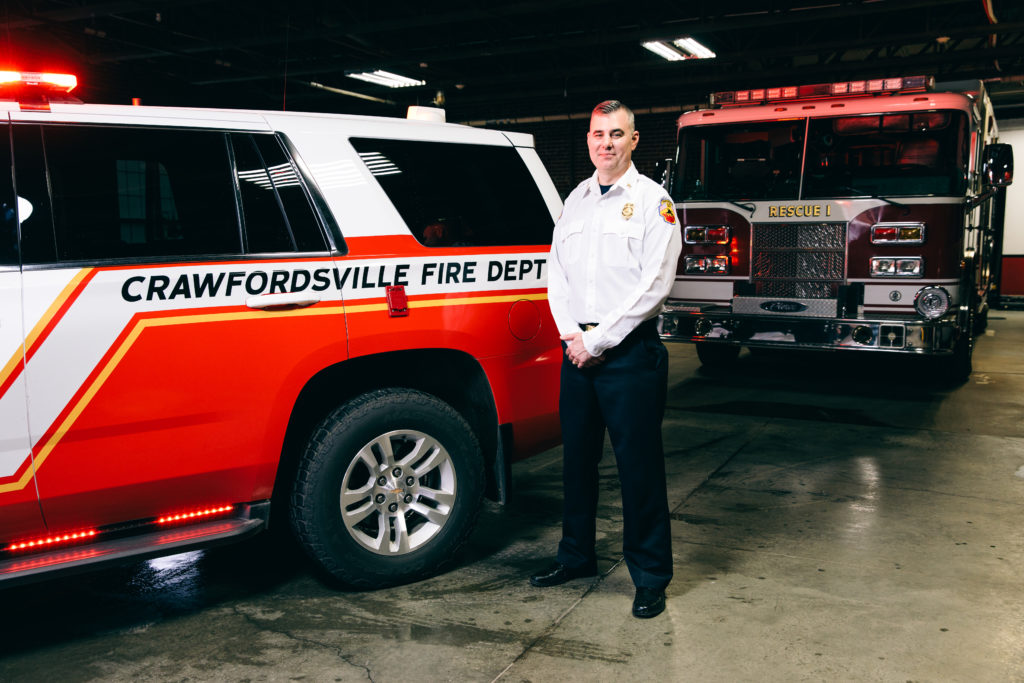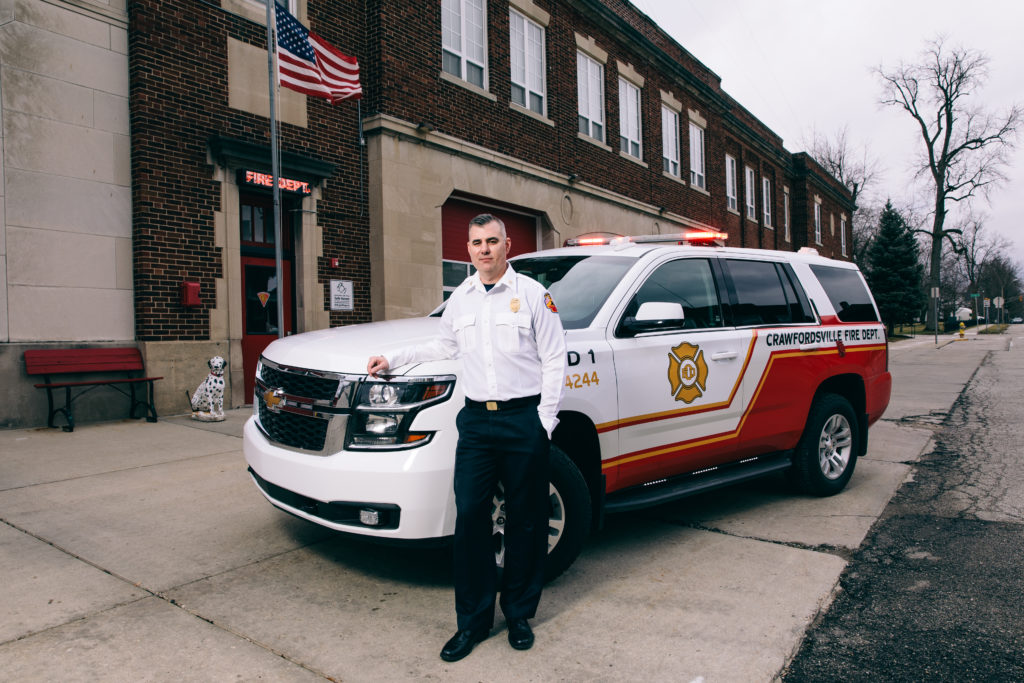Communities in rural Indiana face many challenges when it comes to having access to health care services. One issue that is especially urgent is access to maternity care – including prenatal, delivery, and post-natal care. The rural population is declining in Indiana and growing older. But one man in rural Crawfordsville recognized a way for his community to fill in the gaps and he found an eager partner in Franciscan Health and other community agencies. This collaboration set in motion a series of events that created an incredible paramedicine program—the first of its kind.
The Community Paramedicine Program started in 2016, with the idea of making health care less expensive and more accessible. This is done by bringing care to the home through paramedics, often working in congruency with and as extenders of a patient’s primary care provider. Beginning with heart failure and chronic diseases, the program has expanded its work in Montgomery County to include a wider range of services, including substance use help, prenatal care, and even medication checks, with the program continually growing. The paramedics want to build trust with the people in the community and, starting with the little things, get them healthier.
Paul Miller, division chief of EMS for the Crawfordsville Fire Department, which is located in Montgomery County, has lived in the area for 20 years. His idea for a paramedicine program was sparked by a desire to provide accessible, individualized care—care he would expect for his parents. He was appointed to his current position in 2013, at the same time Terry Klein, vice president and COO of Franciscan Health Crawfordsville, was taking over the hospital. With the birth of new leadership in the county came the growth of new ideas, formulating around people willing to act.

“Terry has done nothing but break down barriers and take away any kind of red tape or administrative hurdles to make sure that this was going to be successful,” said Miller. “He was really instrumental in pulling together people from the hospital for us to have that first stakeholder meeting.”
The many pieces of the paramedicine program fell into place like a unique puzzle because of individuals who saw the potential for the program and found ways to make it work. Instead of seeing a hole in a community’s health care and hoping it would close on its own, the program expanded and found people and processes to fill it.
“Collaboration with community partners is key to addressing health needs,” said Klein. “You cannot do it alone. Paul and the entire team have been and continue to be a great partner in ensuring that our community has access to health care services.”
Joshua Krumenacker, M.D., a family medicine physician with Franciscan Physician Network, who serves as medical director of the Franciscan Health Paramedicine Program, also credits the group effort behind the program for its success.
“We have built it from scratch, from the curriculum to the clinical training to the implementation,” Krumenacker explained. “We have many partners and collaborators that have been very helpful and crucial to making this program work. It has truly been a collaborative effort by many.”
As a result of Miller’s initiative and Franciscan Health’s support, the program is making incredible strides in the old, yet not well known, world of paramedicine.
“When we constructed our program,” said Miller, “We created the most comprehensive system of care in the entire country that has more programs than any other program in the country…we were the first program to start documenting within EPIC and the health system’s EMR (electronic medical record).” He also outlined how this program was the first to use a cradle to grave approach, supporting the most vulnerable patients, from pregnant women all the way up to palliative care. “In those end stages of life, we support each one of our community members the best we can,” Miller said. Additionally, the paramedicine program is fighting addictions through the most robust substance use paramedicine program in the country.

“We are still building on our program,” said Krumenacker, “And have included not only high-risk adult chronic care management but now also high-risk pregnancies and newborn infants. There are numerous other opportunities we are also exploring as there are many community needs.”
The program is clearly making a difference in the health of the community and it’s also saving money by avoiding the need for services. Miller explained that they calculated the cost savings achieved in reduced emergency room visits and hospital readmissions with a group of 38 heart failure or chronic disease management patients. The reduced use led to an estimated $400,000 savings in cost avoidance. Miller added that if every community in the state ran a similar program, it could achieve a staggering $200,000,000 in cost avoidance with Medicaid patients. Another area with huge potential savings is in patients with substance use disorder, where inpatient or residential treatment can cost upwards of $12,000 a day. The paramedicine program has the potential to co-manage care with physician extenders in the home, which could be preferable for patients in some cases, Miller commented—and would result in huge cost savings.
For Project Swaddle, a focus of the program where they work with high risk pregnancies, the numbers show the effectiveness of the program even more. In maternity deserts, which occur frequently in rural areas like Montgomery County, it can be very difficult for expecting mothers to access medical care and, especially if the pregnancy is high risk, there’s a higher chance the baby will be delivered early and have complications.
“Each week for a NICU stay is roughly about $150,000,” said Miller. “We’ve had roughly 70 moms enrolled in our program. All of them that were high risk pregnancies, with just one exception, anticipated delivering early anywhere from 28 to 32 weeks. The great news is that all have gone full term with our program.”
More recently, Miller has been traveling all over the country presenting to interested organizations the model Crawfordsville has created. Working with not only other communities but also the state to replicate this program shows the U.S. is hungry for more accessible, one-on-one health care.
“Extension of health care delivery into community settings is a priority of our agency,” said Dr. Jennifer Sullivan, secretary, Indiana Family and Social Services. “We know that health outcomes will not improve until we are able to consider the needs of Hoosiers beyond our traditional health care system. I am thrilled that the work being done in Crawfordsville is leading the way in how we incorporate all of our resources into improving the lives of Hoosiers.”
This comprehensive program has been proven to work. The only thing left is for it to take root in other communities, potentially changing the overall model of health care in the U.S. forever.


